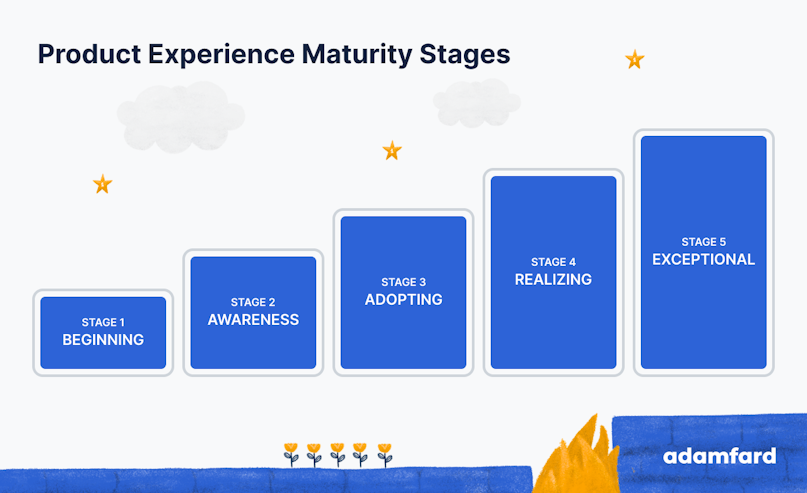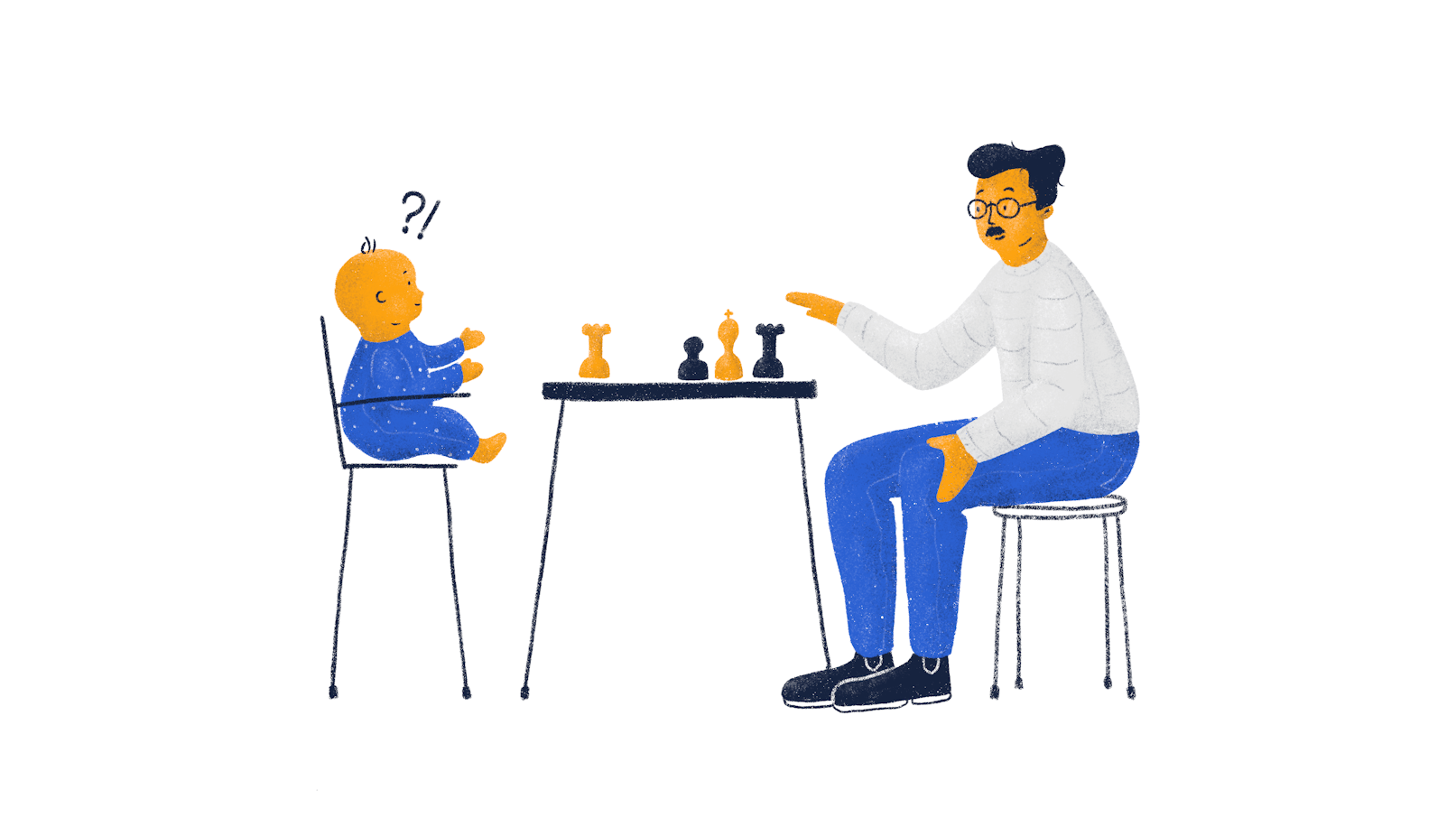Are you a UX toddler or a Yoda-like sage? – Test your UX maturity now.
Whatever your skill level, we break down the whats, hows, and whys of the UX maturity model.
What’s UX Maturity?
Let’s face it, the secret to long-term business success lies in the ability to serve solutions your customers want time after time. And the key to achieving this is through an experienced team of UX designers that know how to focus on user experience. This ability to consistently deliver user-centered solutions at every level is known as UX maturity.
A UX maturity model is a way of assessing how advanced an organization’s UX-related capabilities are. In doing so, it spotlights its strengths and where it needs to improve to boost its UX maturity.
So how can an organization improve its UX maturity?
It all boils down to UX research, from using the right tools and UX strategies to delivering user-centric products. Businesses can achieve Yoda-like UX maturity by focusing on comprehensive research, a robust design procedure, and the right tools.
A brief history of UX Maturity Models
Now let’s rewind a bit and look at where the term UX maturity originally came from.
It all started when Jakob Nielsen developed one of the very first UX maturity models in 2006. He defined 8 stages of UX maturity, each one describing the attitudes and organizational circumstances of companies in relation to user research. From companies that show complete hostility towards it to those that have made it their main focus.
Life moves quickly, especially in the UX world. So, naturally, a lot has changed since Nielsen’s original UX maturity models. As the way we design, research, and deliver UX continues to evolve, so has the idea of UX maturity. As a result, the original models have since been revised within the Nielsen Norman Group to adapt to the new norms and landscape. Nielsen’s UX maturity model now includes 6 stages.
Of course, there are multiple variations of the UX maturity model all over the globe. For instance, Chris Avore, Head of Design at Northwestern Mutual (at the time of writing) has outlined his own model. In his research, Chris outlined his own 4 stages of maturity; Laggard, Early, Progressing, and Modern.
During the 2014 International Conference of Design, User Experience, and Usability, Lorraine Chapman and Scott Plewes argued that achieving excellent UX design is not simply a function or the result of a few talented individuals. Instead, they reasoned that it is an organizational characteristic. For them, organizations reach this level by passing through 5 stages of UX maturity. These 5 stages mark the progress of a company — from zero awareness of UX principles to consistently delivering user-centric solutions.
No matter which UX maturity model you follow, the journey through each stage is pretty similar. At Adam Fard, we break UX maturity into 5 stages. Here’s a closer look.

Stages of UX maturity
We’ve broken down the 5 stages of UX maturity.
Beginning
Stage 1 is blissful ignorance. Businesses have not yet realized that having no UX champions is a problem or they don’t believe user-centric design is needed. As a result, there is nobody in the company that is responsible for UX and no resources directed towards UX. Leaders are not aware that their organization needs UX.
At this stage, the organization needs to first understand the importance of UX design and how it fits into the organization’s vision. They will need a complete overhaul of their attitudes, methods, and workflows.
Awareness
Stage 2 is when organizations become aware of UX principles and practices. However, their knowledge of UX is limited. Typically, organizations at stage 2 will understand what UX is but will not have a fully-developed strategy. Their approach tends to be inconsistent.
At this early stage, UX is usually considered after coding (mostly in the form of visual design). As a result, designers tend to be hired based on their visual design prowess. Leaders don’t have a clear grasp of what design is and fail to distinguish between UI and UX. To progress past this phase, employee training is often needed on the significance of a user-centric approach.
Adopting
As the name suggests, this stage is all about embracing UX processes and practices. The organization is already aware of the importance of UX. As such, they are likely to have UX budgets, resources, and strategies in place. However, since UX maturity is still in its infancy, many processes and practices need to be properly implemented and refined. UX practices are usually haphazardly implemented throughout the product development process and UX processes are split among multiple team members.
To pass this step, organizations must invest time into extensive UX research and hone their UX practices and processes accordingly. They may also need to invest more resources into UX and UX tools before they start reaping the rewards.
Realizing
When organizations reach this phase, they begin to implement UX practices prior to coding. What’s more, UX practices are structured among different team members whose main responsibility is to ensure user-centricity. By the time organizations have reached stage 4, there is a clear organizational structure in place in relation to UX practices and principles.
The organization now has well-developed UX strategies in place to attract audiences and drive user loyalty. The company is already seeing the benefits of user-centric design, but may still face some challenges. To progress past this stage, it needs to use data to tweak its strategy or pivot to a new one.
Exceptional
At this stage, UX processes are deeply integrated into all company projects. Through long-term use and refinement, the components of UX activities have had time to solidify and become efficient. As such, all owners and processes are well-documented and widely understood across the organization. User-centric solutions are delivered at every level of the business.
When organizations reach stage 5, every project begins with a user-centric mindset. User research is utilized heavily in the early stages of product development and all employees infuse UX principles and processes into their daily tasks. In order to maintain this level of excellence, organizations must reassess their strategies regularly. It takes constant tweaking and revising to ensure they remain aligned with business goals.
Moving through the stages of UX Maturity
Moving through the stages of UX maturity isn’t always a linear process. It requires your organization to grow and adapt in a number of areas, such as strategy, culture, and process. All of these factors work together to drive UX maturity. Thus, your organization must improve in all of these areas to achieve excellent UX maturity and reap the full benefits of user-centric design. Simply having a strong UX team isn’t enough if Leaders don’t prioritize UX work. It calls for a company-wide shift in mindset, culture, and processes.
It’s for exactly this reason that a single UX team or department cannot achieve optimal UX maturity levels alone. There needs to be consistency across the whole company, along with the right tools, UX resources, and knowledge sharing. The key to continual improvement is fostering UX-focused leadership. This ensures maturity is reached on a company level, not simply on a team level.
How to measure it
You may be wondering what the best way to measure your organization’s UX maturity is.
Generally speaking, you simply need to look at the criteria above and honestly evaluate your company. This will serve as a guide as to what stage you’re currently at in your UX efforts.
When it comes to measuring UX maturity, it’s important to look beyond one product or team. To get a realistic idea of how mature an organization is, you must look at the full picture. This means evaluating all teams, product groups, or functional groups. That said, product teams can measure the UX maturity of their specific area in a bid to improve or see how they impact the overall maturity of the business.
To make things easier, our experts have come up with our very own UX maturity test. The test will tell you where your company currently stands and offers recommendations on how to improve your score.
If you have issues loading the form, try this link: https://adamfard.typeform.com/to/MWeoF005
Once you have determined your current level, you should aim to progress to the next stage in the model. It takes time to increase UX maturity. In fact, it can take years to move to the next maturity stage. Don’t let that put you off, though. Think of it as building a house. The better laid your foundations are, the stronger (and more scalable) your structure will become. This will help your UX practices weather storms, like large organizational changes.
Even if your organization already scores highly in UX maturity, increasing awareness within the business will certainly be advantageous. Not only does it help maintain your high UX maturity, but it empowers you to ingrain UX into your company’s core.
Outro
UX maturity defines the organizational characteristics of your business in relation to UX. It describes the current level of importance your company places on UX research and integrating user-centric solutions. A UX maturity model outlines what stage of the process you are at. From early-stage hostility towards the principles of UX to advanced-level embracing of UX practices. By understanding what stage of the process you’re currently at, your company can improve its efforts and identify gaps in its UX maturity.





